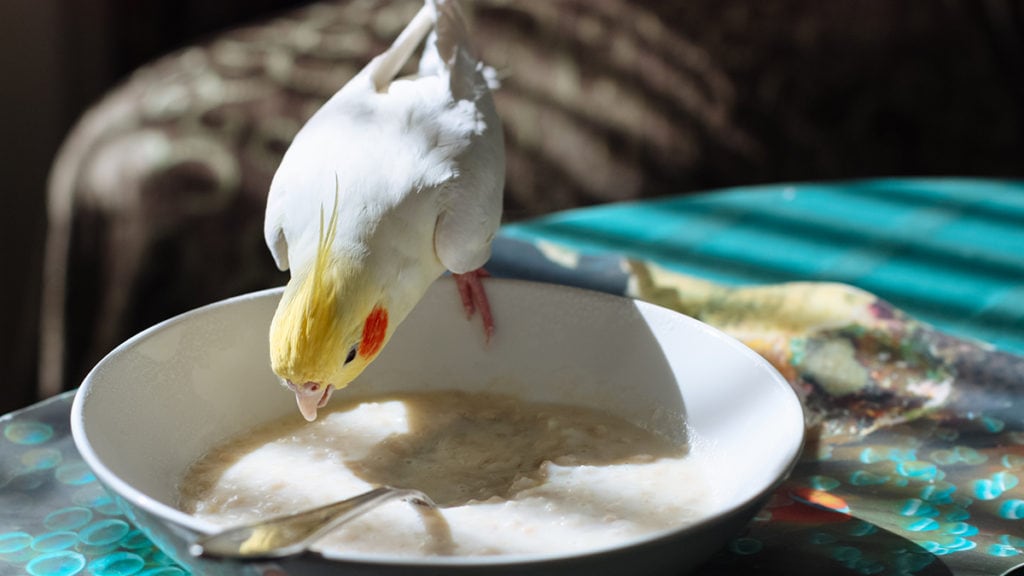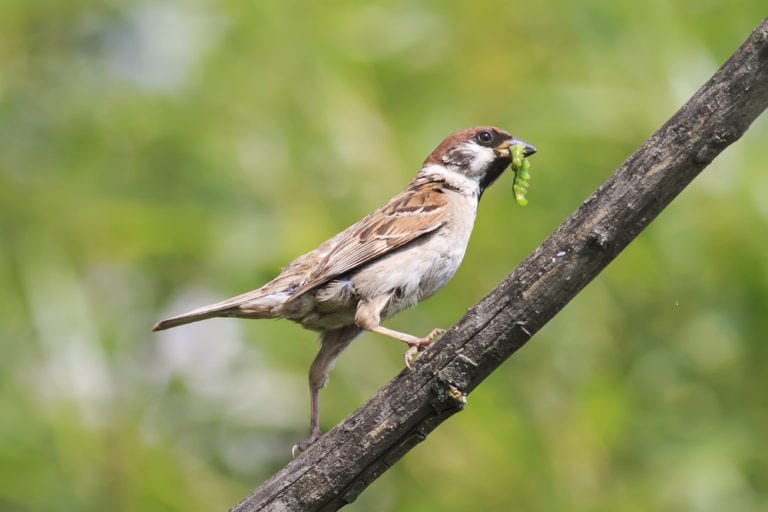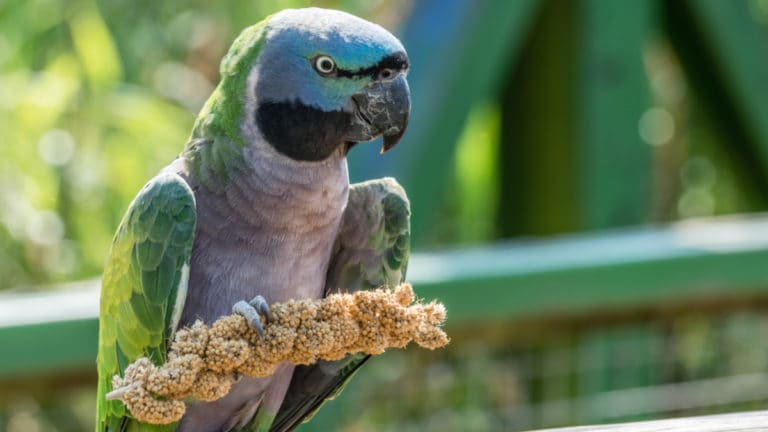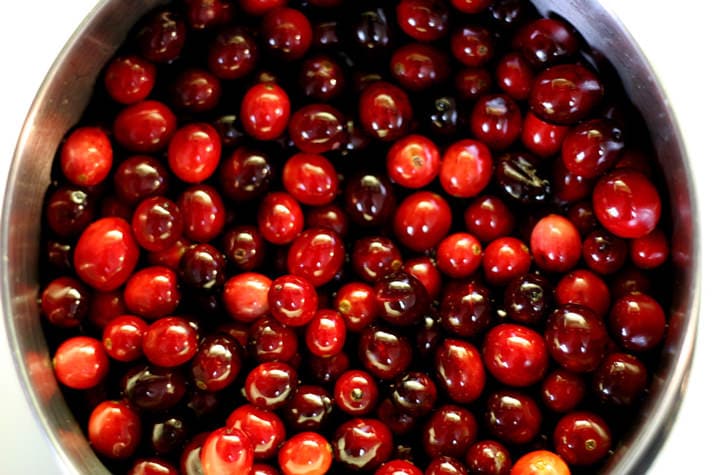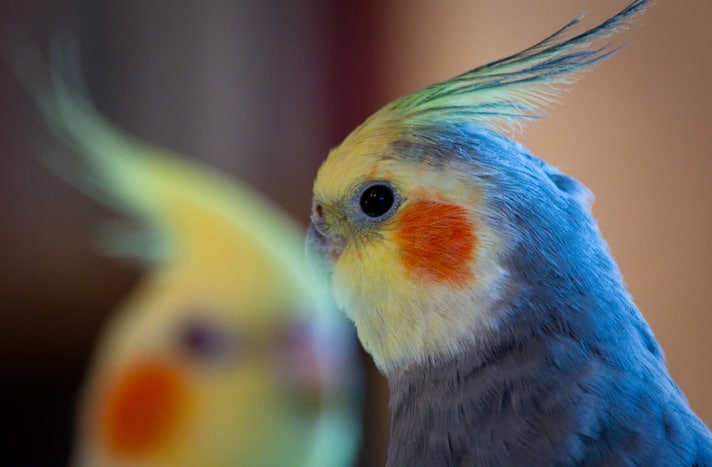Sharing meals with your pet bird is one of the pleasures of the avian lifestyle. Many companion birds even enjoy a special place at the table, especially at breakfast time. And one breakfast item in particular is loved by humans and birds alike – cereal.
Because cereals intended for human consumption aren’t routinely tested on birds, and thus can’t be recommended without reservation, we consulted several experts for their opinions.
Look for Low-Sugar, Whole-Grain Cereals with No Additives
Dr. Donna Muscarella, senior research associate at Cornell University’s Veterinary Medical Center in Ithaca, New York, often feeds cereal to her own pet birds.
“I see nothing wrong with feeding, in moderation, some of the low-sugar, whole-grain cereals to birds,” says Muscarella, who advises bird owners to “Look for genuine, whole-grain cereals like shredded wheat. Nearly everything carries the ‘whole grain’ label, so one must use common sense and perhaps investigate a little further!
“Most commercial cereals are somewhat fortified, but some, like Total are more enhanced than others,” she continues. “A tiny amount is not likely to be a problem, but we know that human vitamin requirements are not comparable to the requirements for birds. Total has high iron content, so I would not advise feeding it to softbills, which are generally prone to iron-storage disease.”
Muscarella has used cereal as a transition food for converting birds to a better diet.
“Parrots often accept Cheerios or Grape Nuts (cockatiels seem to love them!) instead of seed, and they then seem more willing to try other things, like pellets,” Muscarella says. “If one is concerned about additives, there are organic cereals on the market. Many do not contain the added vitamins that are present in the common cereals.”
Board-certified avian veterinarian Robert Monaco of the Old Country Animal Clinic in Plainview, New York concurs.
“I think that natural, unsweetened cereals like Cheerios or shredded wheat are fine,” he says. “I usually give my birds a little cereal a few times per week. It’s funny about Cheerios – everyone can eat them: kids, puppies, birds and even koi fish!”
Many bird owners are worried about the presence of zinc in cereal. Monaco says, “Zinc is an essential element in everyone’s diet. If the body gets a little too much, it will compensate. Too little, and there are major problems. There will not be a zinc toxicity problem by feeding a bird human cereal.”
Muscarella also feeds cooked cereal to her birds.
“I usually cook oatmeal in water and add a dab of soy milk,” she says. “One advantage is that at times, I’ve had to medicate a bird, and mixing the medication with oatmeal or a mashed sweet potato seems to work well, since the birds consider it a treat and gobble the mush off of a spoon as though they were being hand-fed.”
Muscarella’s favorite cereal brands for birds are shredded wheat, Grape Nuts, Cheerios and oatmeal.
“I see no problem with farina or Cream of Wheat,” she says, “other than the way my parrots smush it around on surfaces with their beaks, and it dries into the hardest cement known to mankind!”
Longtime bird enthusiast Barbara Landsperg was hand-rearing small birds long before formulated hand-feeding formulas were widely available in pet shops.
“I raised my budgerigar babies on high-protein baby cereal, to which I added ground sunflower seed, baby apple sauce, a drop of liquid avian vitamins and a touch of Karo syrup,” she says. “That was in 1979.”
Her lorikeet’s diet included oatmeal baby cereal with unsweetened apple sauce and a touch of condensed milk along with fruits and vegetables.
Landsperg sometimes gives her birds cooked oatmeal. “They love it,” she said. “I occasionally give them small amounts of various dry cereals like Cheerios, Rice Krispies and Raisin Bran as treats.”
Don’t Fill It To The Brim
Moderation is the key to success, according to board-certified avian veterinarian Greg Burkett of the Avian Veterinary Services Clinic in Durham, North Carolina.
“In small quantities, and fed just as a treat, even the sweetened cereals are not a health risk,” Burkett says. “You do not want to put a big bowl in the cage for impromptu treats, though.”
Burkett pointed out that high levels of sugar can lead to yeast infections and recommended whole-grain, sugar-free cereals with no artificial colors.
“I prefer Cheerios and other unsweetened natural grain cereals,” he says. “The zinc in food is at such tiny levels that you won’t see toxicity from dietary zinc. If you share your cereal with your birds, be aware that they cannot digest the lactose (found in milk) and may develop some temporary diarrhea.”
There’s been a lot of discussion about the presence of zinc in cereal and whether it’s toxic to birds. I asked avian veterinarian Elisabeth Simone-Freilicher of the Veterinary Medical Center in West Islip, New York, to clarify the situation.
“The zinc in foods is usually zinc sulfate or zinc oxide, rather than the pure metallic zinc used in cages and supplies,” Freilicher says. “Zinc, like all required trace metals, can be toxic at levels not much higher than the dietary requirement. Amounts that are 10 to 20 times zinc’s requirement are thought to be toxic in birds. Of course, when it comes to zinc, other ingredients in the food matter – oat bran, I believe, is high in phytates, which can make zinc less easily absorbed.”
Although Freilicher is not “wild about feeding cereal to pet birds,” she believes it is probably fine offered in small amounts or as a tasty treat, rather than a food supplement.
Freilicher says that the main problems with cereal are carbs, fiber, low protein and added vitamins and minerals. She pointed out that most cereals on the market list sugar as the second or third ingredient, and the first ingredients are always starches.
“Psittacines (with the possible exception of lories) just don’t need that much sugar,” she says. “Birds eat for their energy requirements, and most cereals also don’t have very much protein as a percentage of their weight to balance out all that sugar and starch. Most pellets are about 10- to15-percent protein.”
Freilicher also noted that a lot of the “healthier” cereals are high fiber – because humans need more fiber than birds do – and a high-fiber cereal can make a bird feel full without adding much nutrition.
“The added vitamins and minerals can also be problematic – not only zinc, but calcium can also cause problems, at only 2.5 percent of the diet in poultry,” she says. “Fat-soluble vitamins such as A, D and E can also be easily overdosed. As with everything else, Cream of Wheat and farina are probably fine in moderation, but I’d worry about the ones that contain added iron, which might be too high for some especially sensitive species such as lories, toucans and mynahs.”
The consensus about cereals is: Read labels, avoid those enhanced with sugar and vitamins, and feed in moderation. Provide your bird with a broad-based diet, and consult your avian veterinarian for specific advice.
Posted by: Chewy Editorial
Feature Image: jonnyslav/Shutterstock.com
Share:
